Projects ZSU family Leichter Versuchsflakwagen (Germany)
By the fall of 1942, the command of Nazi Germany realized the prospects of self-propelled artillery for air defense. Similar systems could accompany troops on the march and during the battle, protecting them from aviation the enemy. Understanding the importance of such equipment led to the initiation of work on promising topics and to the emergence of several different projects of armored vehicles on different chassis and with different weapons. In September 42, the terms of reference for the development of a light class ZSU were formed.
In accordance with the requirements of the army, the industry had to develop several variants of self-propelled guns based on existing light tanks. On the chassis should be installed swivel turret with anti-aircraft weapons. The latter offered the Flak 38 guns of the 20 mm caliber, as well as the Flak 37 and FlaK 36 43 mm. The chassis and the tower were supposed to protect the crew from bullets and debris, and the combat mass of the vehicle was limited to 4,5 t. Such a technique was supposed to be able to effectively solve air defense tasks and accompany troop units without any problems.
The terms of reference were issued to Krupp and Rheinmetall-Borsig, who had extensive experience in the development of armored vehicles. According to some data, the specialists of Rheinmetall, for various reasons, did not bring their projects to implementation, which is why all the following work was carried out only by Krupp. For this reason, there is no exact information about the developments of Rheinmetall-Borsig in the framework of the new program.
The existing technical task set specific requirements for the project and for the main aggregates of the prospective machine. After analyzing the available capabilities, it was decided to build a ZSU based on the VK 1303 chassis. This machine was a further development of the light tank Pz.Kpfw.II and had some differences from its early modifications. The VK 1303 went into the series as a light reconnaissance tank Pz.Kpfw.II Ausf.L Luchs. From the base tank, it differed in hull design, power plant, etc.
A preliminary study of the tower with anti-aircraft weapons showed that the VK 1303 chassis needs some improvements. For the installation of a new large tower, it was necessary to increase the length of the hull, as well as to modify its side part, which allowed placing a relatively large shoulder strap of the tower on the roof. As follows from the available materials, as a result of such modifications, the body has changed its shape and size. In addition, the chassis is replenished with new units, aimed at compensating for the increase in length.
The reconnaissance tank Luhs was a modified version of the base Pz.Kpfw.II with some modifications of the design. At the same time, the machine retained the overall architecture, the layout of the internal volumes of the body, and other features. Simultaneously with the preservation of some features, new ideas were applied, which led to the creation of an updated undercarriage, processing of the armor corps, the use of new weapons and other improvements.
The hull of the Pz.Kpfw.II Ausf.L was assembled from rolled armor plates up to 30 mm in thickness (frontal hull and turret parts), which provided protection against bullets and shrapnel. The traditional layout of the German tanks was used with a front-mounted control compartment, a central fighting compartment and a spaced power plant: the engine was located in the aft compartment, and the transmission was placed in front of the hull. A rotary turret with machine-gun armament and a set of sighting equipment was mounted on the roof.
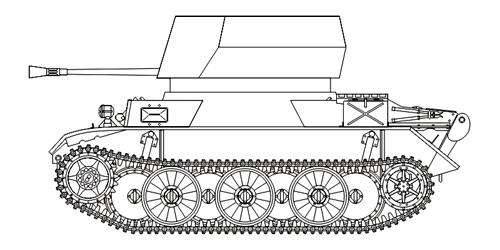
Side projection of self-propelled gun with 37-mm gun
The light tank was equipped with a Maybach HL 66P petrol six-cylinder engine with a power of 180 hp. With the help of a cardan shaft, passing over the bottom of the case, the engine torque was transmitted to a manual gearbox and other units, through which it entered the front drive wheels.
As part of the Luchs project, the undercarriage of the base tank Pz.Kpfw.II. The initial light tank had five small diameter road wheels each on board, equipped with an individual spring suspension. In the new project, the diameter of the road wheels was significantly increased. In addition, they were placed in a checkerboard pattern with partial overlap. Suspension was built on the basis of torsions. The outer row consisted of two rollers, in the inner one there were three. In front of the hull were driving wheels, in the stern - guides. Due to the large diameter of the rollers, the upper branch of the track did not need separate supporting rollers.
The reconnaissance tank had a combat mass at the level of 11,8 t. The available engine allowed it to reach speeds of up to 60 km / h, the cruising range, depending on the characteristics of the route, exceeded 150 km. The armament of the tank, depending on the series, consisted of an 20 or 50 mm caliber cannon and a machine gun. The crew consisted of four people.
Work on updating the VK 1303 chassis and creating new combat vehicles continued until November of the 1942 year. For several weeks, four promising self-propelled guns were developed. Three of them carried anti-aircraft armament caliber 20 or 37 mm, and the fourth project involved the use of 105-mm field howitzer. From the project howitzer SAU refused because of the mass of similar projects, and the development of ZSU continued. All new projects received the general designation Leichter Versuchsflakwagen (“Light experimental anti-aircraft machine”).
In the winter of 1942-43, it was decided to start developing promising anti-aircraft self-propelled guns on the chassis of the Pz.Kpfw.IV medium tank, which became an additional incentive to speed up the work on the Leichter Versuchsflakwagen project. In addition, this led to the emergence of a new proposal for weapons. Now considered the possibility of using guns caliber 20, 37 and 50 mm. By the spring of 43, an important new decision was made, which affected the further development of promising technology. The military and engineers decided to use unified chassis and towers in all projects of the new ZSU. The differences, therefore, should have been only in armament, sighting devices, etc.
By this time, the main features of all new armored vehicles had already been identified. In addition, a list of necessary modifications was made to the basic equipment and some design work was carried out to modify it. The result of such work was the emergence of a project of a unified platform for anti-aircraft weapons of various types.
To use the new turret with automatic guns, the VK 1303 chassis had to be modified. Due to the insufficient size of the existing fighting compartment, it was necessary to increase the length of the hull and change its shape. The total length of the body has grown by about a meter. Due to this, it was possible to place a new box under the central part of the body. It was made in the form of a truncated cone protruding above the roof and extending beyond the limits of the main vertical sides. The dimensions of such a box allowed without any problems to mount a new tower and ensure its circular rotation.
In view of the increase in the length of the hull, the undercarriage had to be supplemented with two pairs of track rollers. Now the outer row consisted of three rollers, and the inner row included four. General features of the chassis while remaining the same. In addition to changing the number of rollers, no modifications were undertaken.
On the chase, it was proposed to mount a turret with different weapons. All versions of this unit had a basis in the form of a cylindrical block in contact with a shoulder strap and holding onto the platform with other units. On this platform were placed rounded sides and feed, made of two sheets, as well as frontal units. When installing the gun barrel should be located in the slot frontal part of the tower. To the left of the barrel was an inclined sheet, and to the right there was a concave design with a hatch for using the sight. When using other weapons tower could change the shape and size.
Since the spring of 1943, in the framework of the Leichter Versuchsflakwagen project, two versions of the tower with weapons were developed, intended for the installation of different systems. Option “A” allowed arming a ZNU 50-mm cannon FlaK 41 or 37-mm FlaK 43. The modification “B” was adapted to install Flak 38 or FlaK 36 guns of 20 and 37 mm caliber, respectively. In addition, it is known about the development of the third version of self-propelled guns with enhanced armor and 55-mm automatic cannon Gerät 58.
The weakest armament of the Leichter Versuchsflakwagen ZSU family was to be the 2 gun cm FlaK 38. This 20-mm gun could fire at a rate of up to 400-450 shots per minute, but in practice the rate of fire was reduced to 170-180 shots per minute due to the need to change box magazines to 20 shells. The effective range of such a weapon, depending on various factors, did not exceed 1,5-2 km.
A more powerful weapon was the 37-mm automatic cannons FlaK 36 and FlaK 43, which were different modifications of the same basic system. Such weapon could do up to 250 shots per minute (in practice, no more than 130-150) and hit air targets at ranges up to 4 km. When working on ground objects, it was possible to hit targets at a distance of more than 6 km. Automatic gun caliber 37 mm equipped with an ammunition system based on the clips on the 8 shells.
Initially, the 5 cm FlaK 41 cannon was to be the most powerful weapon in the Leichter Versuchsflakwagen family of combat vehicles. Such a gun with a 50 mm caliber barrel and 86 caliber lengths could accelerate a projectile to 840 m / s and send it to a distance of 3 km (when firing at aircraft). The maximum range of ground targets exceeded 10 km. Automation based on the exhaust gas provided a technical rate of fire at the level of 180 rounds per minute. For the supply of ammunition used clips for five shells.
In 1943, there was a proposal to equip the modified version of VK 1303 chassis, which is characterized by enhanced armoring, with an automatic cannon of Gerät 58 caliber 55 mm. Such an instrument with gas automatics and a barrel with a length of 76 caliber had to use projectiles of various types and hit targets at altitudes and distances up to 4 km. The rate of fire reached 150 shots per minute. It should be noted that, despite all the efforts of industry, until the end of the war only two such guns were used, which were used in tests. Serial production did not start.
Design work on several anti-aircraft self-propelled guns continued with some success. No later than the autumn of 1943, the ZSU scale model was even assembled with a new turret and a 37 mm caliber cannon. He was shown to the customer’s representatives. In addition, the military was presented documentation on this and other projects.
By the beginning of the 1944 of the year, the Leichter Versuchsflakwagen project, which involved building self-propelled guns based on a modified VK chassis, the VK 1303, faced some difficulties. From the beginning of 43, the development of a new ZSU based on the Pz.Kpfw.IV medium tank (Flakpanzer IV family) was in parallel. Such a chassis was distinguished by higher characteristics and, as a result, it had great prospects from the point of view of creating a new special technology. The further fate of the project based on VK 1303 was the subject of controversy.
As the Flakpanzer IV program evolved, the need for further development of the Leichter Versuchsflakwagen ZSU evoked more and more doubts. In addition, the lack of noticeable progress seriously affected the design of the light equipment. For various reasons, the construction of prototypes of such machines was constantly postponed, while self-propelled guns based on the first types of Pz.Kpfw.IV had already been tested. Thus, the project on the basis of a light tank began to lag behind, not only in terms of characteristics, but also in terms of work rates.
In the middle of 1944, the military finally decided on the future of the new ZSU projects. Several machines of the Flakpanzer IV family have already reached the testing stage or have even entered mass production. The Leichter Versuchsflakwagen project, in turn, existed only in the form of drawings and a layout. In view of this lag from alternative projects, it was decided to abandon the further development of the family. By the autumn of 1944, all work on the ZSU based on the VK 1303 chassis was stopped. Documentation passed to the archive as useless.
Leichter Versuchsflakwagen family projects remained in stories as one of the unfortunate developments of the German industry during the Second World War. In the period when the work began, such equipment was of some interest to the troops, but the delay in work and the emergence of more successful alternative projects made it unnecessary. As a result, the only tangible model that, for obvious reasons, could not help the troops was the only tangible result of the long work.
Based on:
http://weaponscollection.com/
http://aviarmor.net/
http://whq-forum.de/
http://ost-front.ru/
http://forum.axishistory.com/
http://leadwarrior.com/
Chamberlain P., Doyle H. Complete reference book of German tanks and self-propelled guns of the Second World War. - M .: AST: Astrel, 2008.
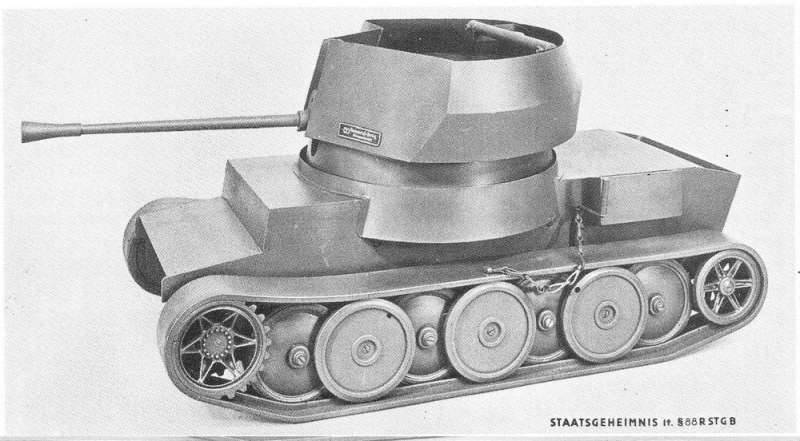
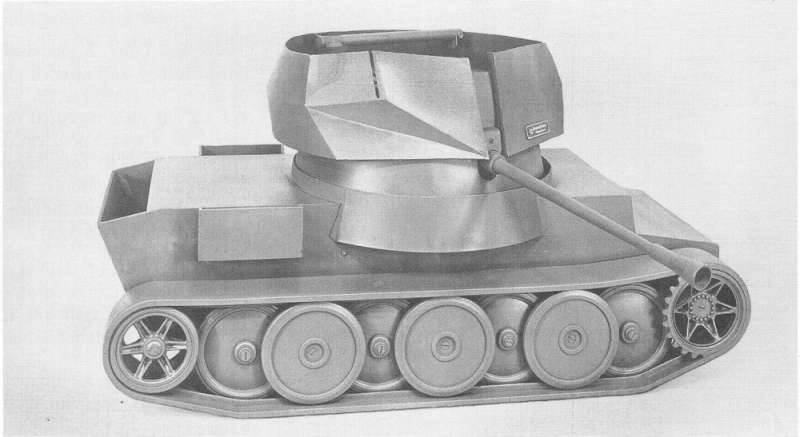
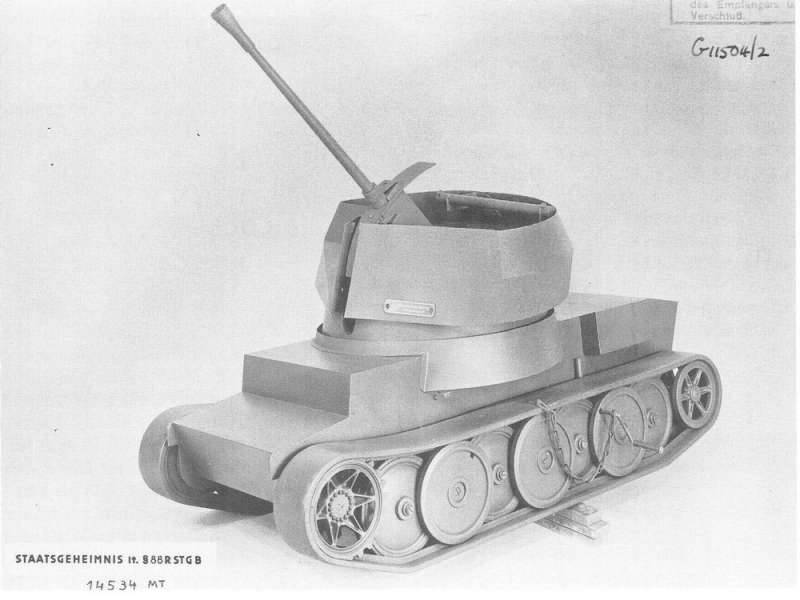
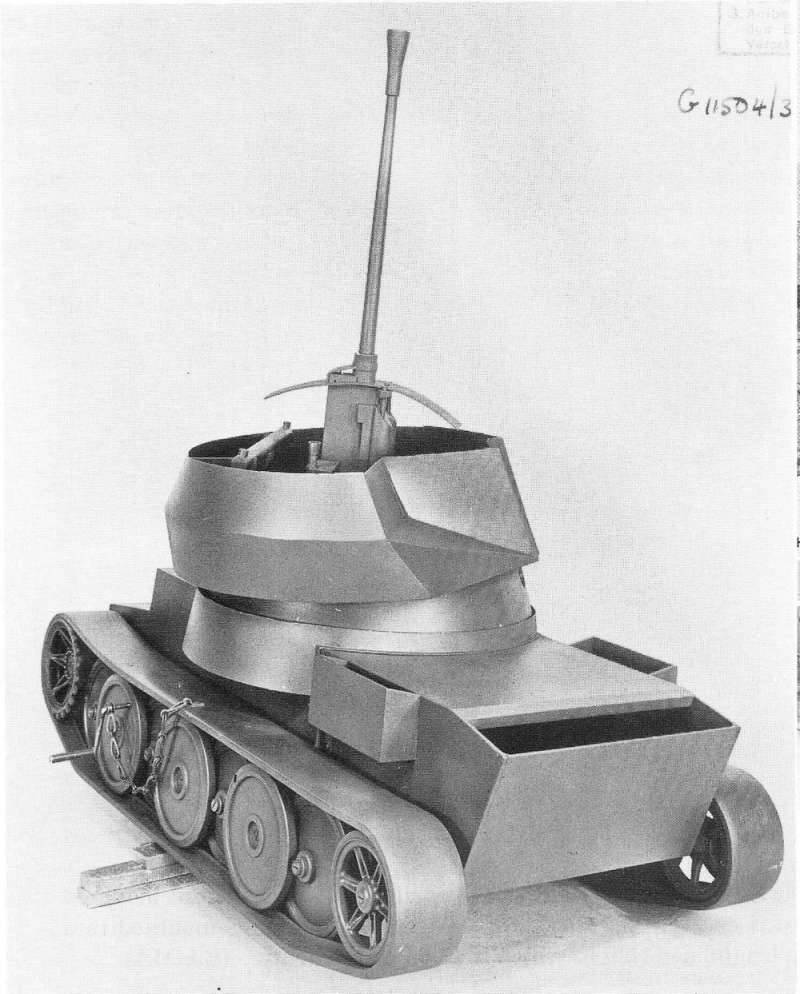
Information